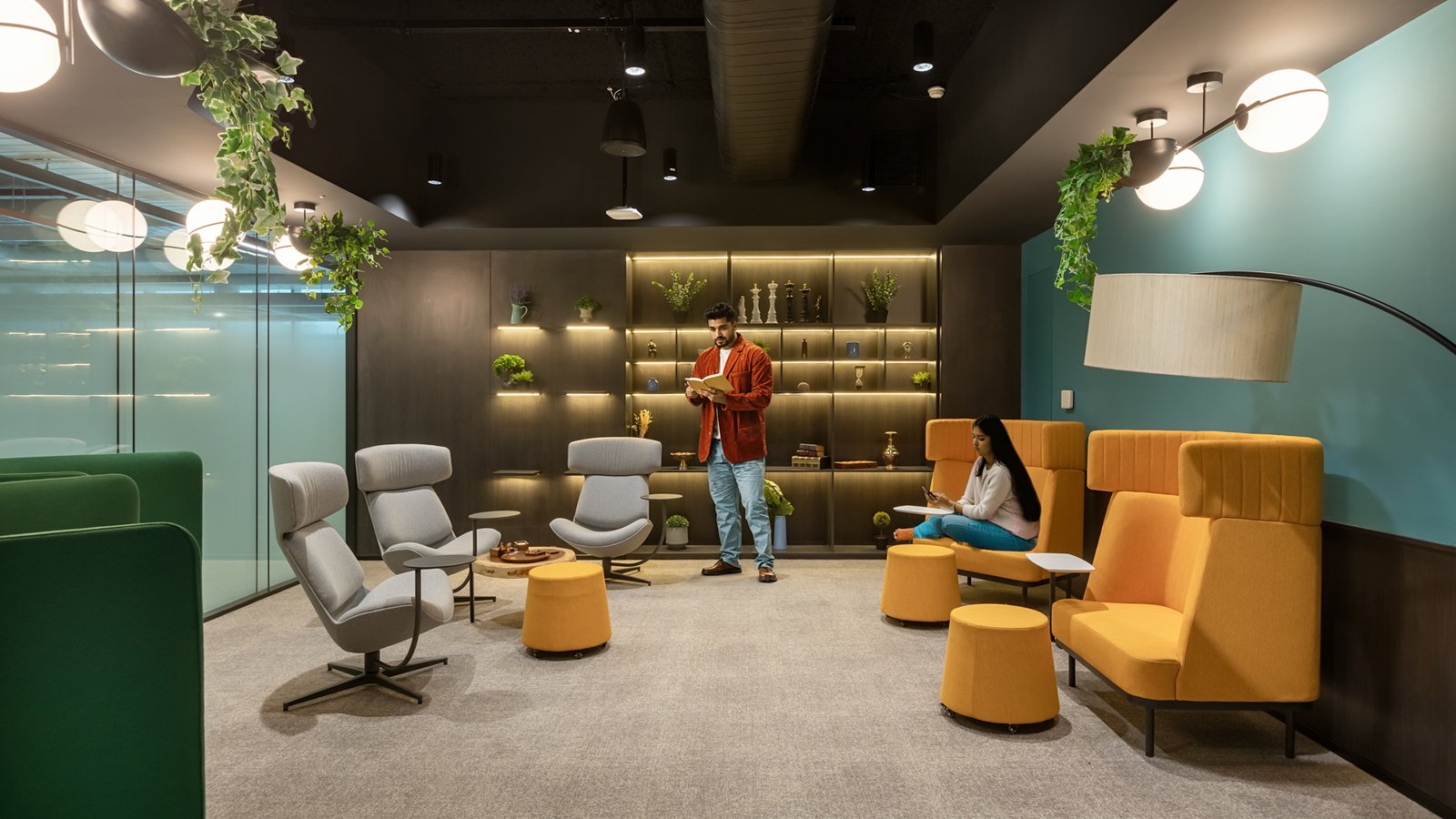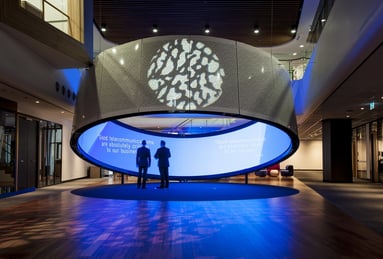From Offices to Atmospheres | Tim Larson Speaks to ACE Design Sense on How Wellness, Technology, and Human Connection Are Redefining the Built Environment

The workplace is undergoing a profound transformation, shaped by evolving societal values, technological innovation, and a renewed focus on human-centered experiences. As we navigate a post-hybrid world marked by climate urgency and accelerated digital integration, design must rise to meet new expectations. In a recent interview with Design Sense, India’s leading monthly magazine for architecture and design, Tim Larson, CEO, Asia and Head of Experiential Design at Unispace, emphasized the need to balance functionality with emotional resonance, sustainability with luxury, and tradition with innovation.
The following trends illustrate how design is evolving to meet new human needs, technological possibilities, and environmental responsibilities. By embracing employee-centric workplaces, sustainable wellness, digital-physical immersion, sensory science, authenticity, and inclusivity, the built environment can create spaces that are not just functional but meaningful, future-proof, and deeply human.
The Return to Office Reinvented
The post-hybrid era has seen a resurgence in office attendance as companies recognize the value of in-person collaboration, mentorship, and company culture. However, employees now demand workplaces that justify the commute—spaces that prioritize comfort, flexibility, and engagement. Design must respond by creating activity-based working environments, wellness-integrated spaces, and social hubs that foster connection. Employers investing in high-quality workplace experiences will attract and retain top talent while boosting productivity and innovation.
Wellness and Sustainability as the New Status Symbols
Modern luxury is no longer defined solely by opulence but by health-conscious and eco-conscious design. High-end spaces now integrate biophilic elements, non-toxic materials, and energy-efficient systems, reflecting a shift toward responsible indulgence. Consumers and businesses alike prioritize environments that enhance well-being while minimizing environmental impact. Certifications like WELL and LEED are becoming status symbols, proving that true luxury lies in sustainability, air quality, natural light, and holistic wellness.
 Wellness Room @HPX Sydney
Wellness Room @HPX Sydney
Digital-Physical Placemaking
The lines between physical and digital experiences are blurring. Smart buildings, spatial computing, and AI-driven personalization are transforming how people interact with spaces. Placemaking now incorporates digital storytelling, interactive installations, and virtual community-building tools to enhance cultural engagement. Whether in offices, retail, or public spaces, design must merge local authenticity with cutting-edge tech to create memorable, dynamic environments that resonate across generations.
 Training Room @Smith & Nephew Munich
Training Room @Smith & Nephew Munich
The Science of Atmosphere
Advances in neuroscience and environmental psychology have proven that lighting, acoustics, scent, and thermal comfort deeply influence mood and behavior. Designers now leverage smart sensors, circadian lighting systems, and soundscaping to craft atmospheres that optimize focus, relaxation, or social energy. This trend reflects a shift toward evidence-based design, where spaces are engineered not just for aesthetics but for cognitive and emotional impact.
 Collaborative Space with Smart Light Sensors @HP Gurgaon
Collaborative Space with Smart Light Sensors @HP Gurgaon
Biophilic Craftsmanship
As urbanization and digital fatigue grow, people crave organic textures, earthy palettes, and artisanal craftsmanship. This trend, driven by biophilic design principles, uses natural wood, stone, terracotta, and woven textiles to create warmth and authenticity. Additionally, handmade and locally sourced materials reinforce sustainability while telling a story. In a world dominated by screens, tactile, nature-inspired design fosters calm, connection, and timelessness.
 Award-winning Sustainable Workplace Design @Arup Australia
Award-winning Sustainable Workplace Design @Arup Australia
Design for All Ages
With five generations now in the workforce (from Baby Boomers to Gen Alpha) and families living longer, spaces must cater to diverse ages, abilities, and preferences. Universal design principles—such as adjustable furniture, inclusive layouts, and adaptive technology—ensure accessibility without compromising style. Workplaces, homes, and public areas must be flexible and intergenerational, fostering collaboration and comfort for all users.
 Flexible Space @VaynerMedia Singapore
Flexible Space @VaynerMedia Singapore
These trends illustrate how design is evolving to meet new human needs, technological possibilities, and environmental responsibilities. By embracing employee-centric workplaces, sustainable wellness, digital-physical hybridity, sensory science, natural authenticity, and inclusivity, the built environment can create spaces that are not just functional but meaningful, future-proof, and deeply human.
About Tim Larson, Chief Executive Office, Asia and Head of Experiential Design

|
Based in our Singapore studio, Tim is the Chief Executive Office, Asia and Head of Experiential Design . He has been a leading innovator in the field of designing emerging experiences, and interaction in architectural environments for more than 25 years. Previously Design Principal, Downstream, our experience design agency, he grew the business through pioneering new approaches in corporate interiors, retail stores, sports and entertainment venues, among other space types. Connect with Tim on LinkedIn |


